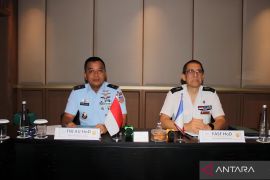Although the government of Indonesia has sought to eliminate lymphatic filariasis by 2020, this deadly disease still remains a public health problem in Indonesia, with the highest number of cases recorded in West Papua, and Papua.
In West Papua, the local government has started filariasis elimination movement, but the cases still exist in all cities and districts, except the Arfak Mountains, West Papua Health Office Chief Otto Parorongan remarked in Manokwari recently.
In this filariasis elimination movement, Parorongan called on all citizens between the ages of two and 70 in the province to take drugs to prevent transmission.
Out of the 12 urban districts in West Papua, South Sorong ranks first as the area with the the highest number of cases of chronic elephant foot, followed by Manokwari, Teluk Wondama, Maybrat, Sorong District, Fakfak, South Manokwari, Tambrauw, Kaimana, Sorong City, Bintuni Bay, and Raja Ampat.
In South Sorong, there were 178 chronic cases; Manokwari had 142 cases, Teluk Wondama had 63 cases, and Maybrat had 51 cases. Filariasis worms are easily transmitted through mosquito bites.
According to Parorongan, the local government continues to boost the efforts to eradicate the diseases throughout the province.
He noted that out of 13 districts/cities in West Papua, only the district of Arfak Mountains is free from cases of malarial and filariasis.
It is because the Arfak Mountain district is a cold area, where mosquitoes find it difficult to thrive. Hence, cases of malaria and filariasis have not been found so far in this area, which is also rich in tourism potential.
In the province of Papua, the cases of lymphatic filariasis also remain high in the districts of Mimika and Biak Numfor.
Mimika Health Office spokesman Reynold Ubra remarked in Timika over the weekend that the number of cases was still high, above two percent. Threfore, he advised all residents in the district to take medicine to prevent the disease for the next five years.
In connection with this, the Mimika district government will hold a campaign to provide mass prevention drugs for filariasis to Mimika residents.
"For five consecutive years, everyone in Mimika must take medicine once a year to prevent filariasis. Moreover, the vector is still here; therefore, taking this mass drug is a solution to eliminate filariasis cases in the district," Ubra explained.
Several other regions in Indonesia have, since 2017, been free from cases of filariasis, yaws, leprosy, rubella, and measles.
According to Ubra, medicine to prevent mass filariasis cases can be taken by everyone in Mimika, except pregnant women, toddlers under the age of two years, and patients with a history of heart disease.
Infectious Disease Control and Prevention Section Head of the Papua Health Office Yamamoto Sasarari stated that microfilaria distribution in Mimika was more than one percent, and so it was categorized as a filariasis endemic area.
In 2017, three Mimika residents were found positive for filariasis, he added.
The Papuan Health Office has distributed medicines to regions, especially regions that are categorized as endemic, to carry out programs to take drugs en masse in order to avoid the transmission of filariasis.
Filariasis is caused by micro worms that are transmitted through mosquito bites.
Of the 29 districts / cities in Papua, there are five districts that have successfully eliminated filariasis, namely Merauke, Mappi, Boven Digul, Supiori, and Mimika.
The government of Indonesia has declared October as the Lymphatic Filariasis Elimination Month, in its attempt to eliminate the disease caused by mosquitoes.
The story of the disease begins with a mosquito bite. The bloodsucker feeds on humans, thereby transmitting the larvae of the worms which cause the disease called lymphatic filariasis.
After many such bites, the larvae develop into thin microscopic worms which invade the host`s lymphatic system, where they grow into adult worms.
During their seven-year life, these worms damage the lymphatic system and cause infections that lead to blockages, swellings, and fevers.
Hence, the government has been regularly providing medication for people every October since 2012, in an effort to stop the spread of the disease.
This year, the campaign, during Lymphatic Filariasis Elimination Month, would target numerous districts where residents are prone to contract the disease.
According to the health minister, support of all parties, including the community members, is essential to tackle the disease, because the declaration of lymphatic filariasis elimination month is the first step to create a country free from elephantiasis.
The health minister has urged the community to maintain a healthy lifestyle and regularly clean up the mosquito breeding grounds, because this bloodsucker insect is capable of transmitting various diseases, including elephantiasis.
Worldwide, 120 million people suffer from elephantiasis, with most of them being in poor, tropical nations where crowding and poor sanitation are rampant. About 40 million of them are seriously incapacitated by the disease. A billion people globally are at risk.
Six years ago, the World Health Organization (WHO) set a goal of eradicating filariasis worldwide by 2020. Since then, the lymphatic disease has been eliminated in 63 countries.
But in Indonesia, chronic cases of elephantiasis have increased sharply due to its limited resources and vast geographic area.
A national survey revealed that filariasis was endemic in all Indonesian provinces, meaning at least 1 percent of 500 people tested had the disease, officials remarked.
EDITED BY INE
Reporter: Otniel Tamindael
Editor: Otniel Tamindael
Copyright © ANTARA 2018












